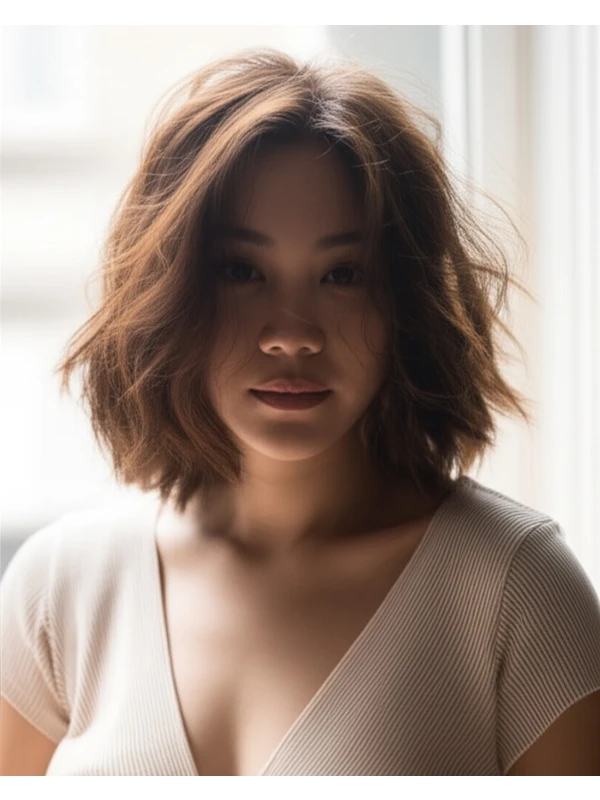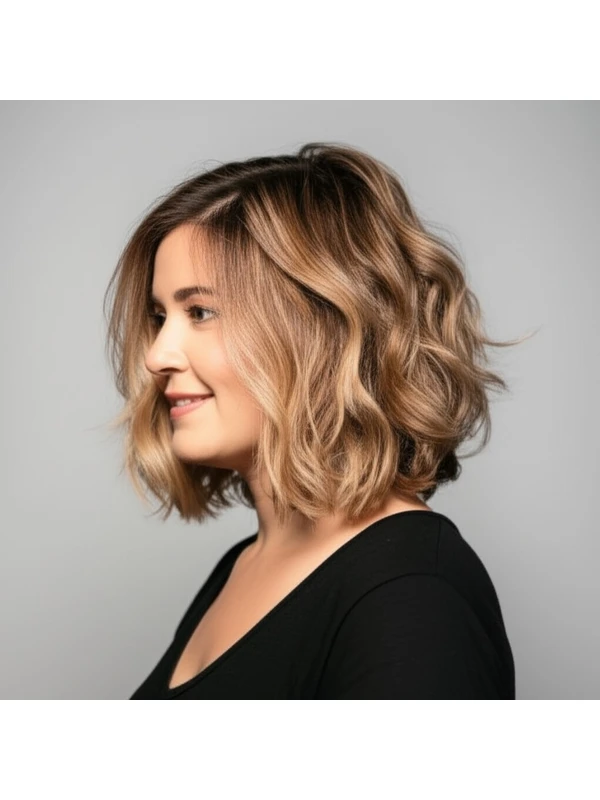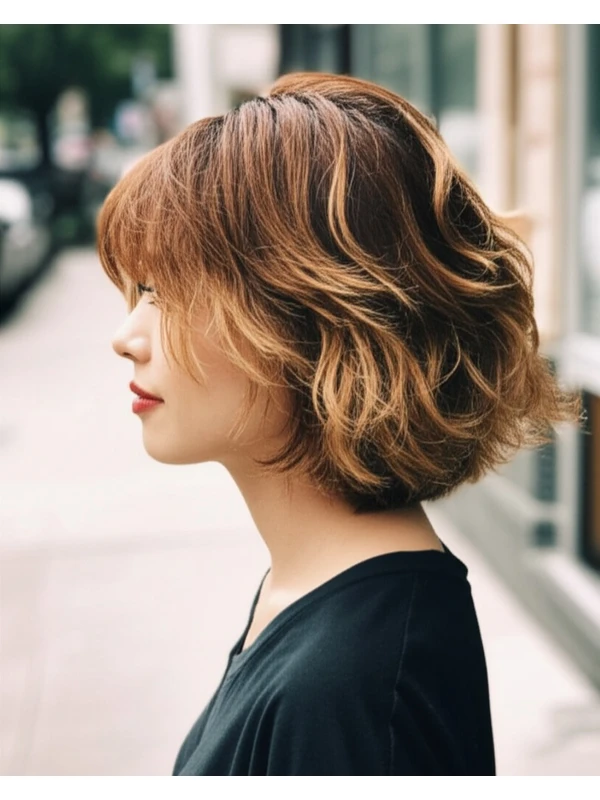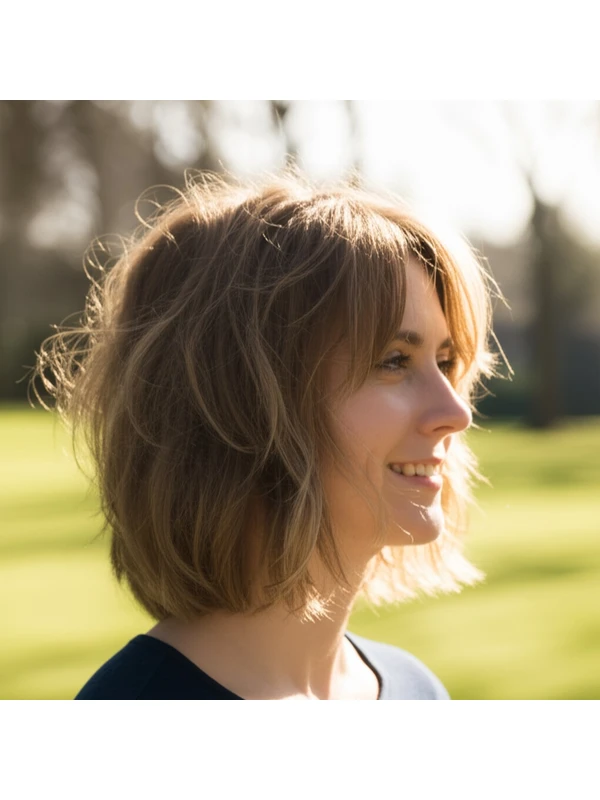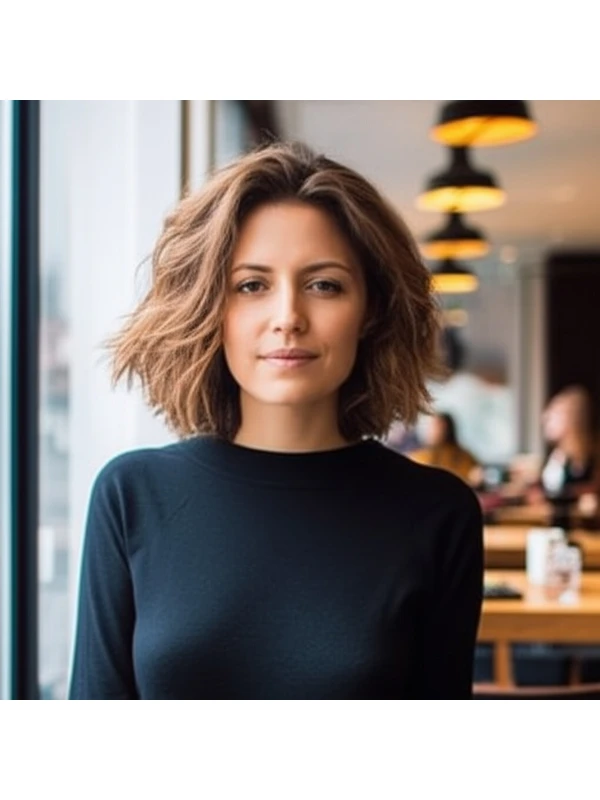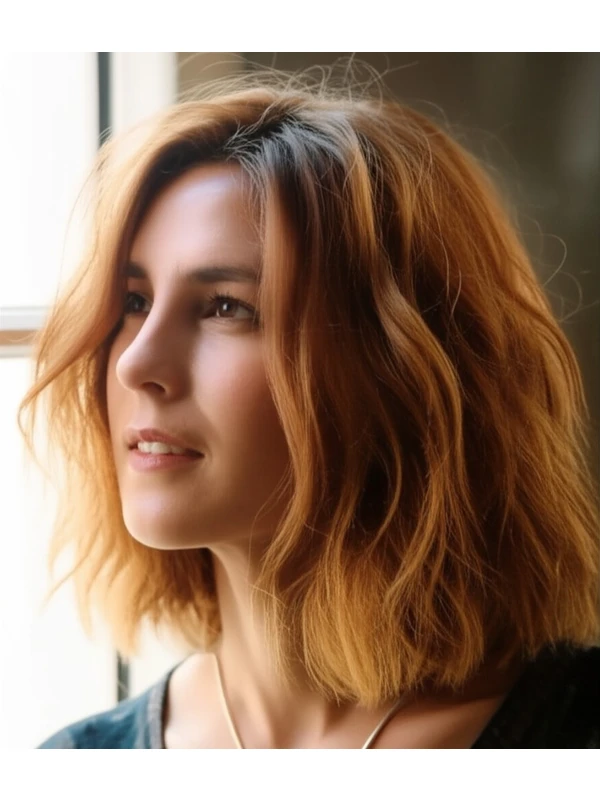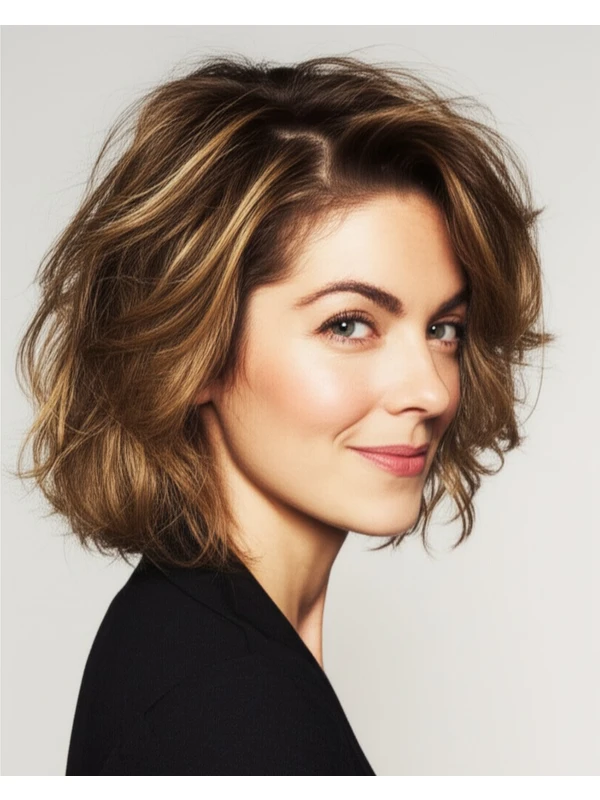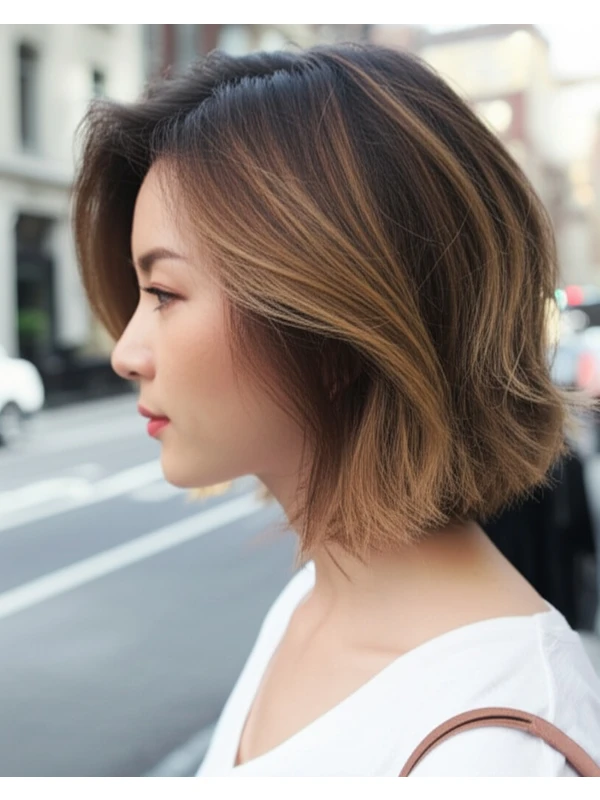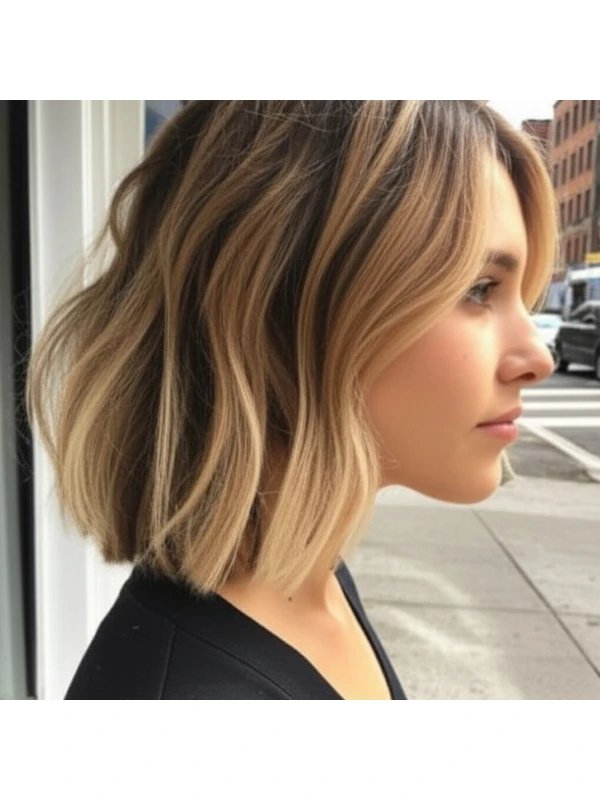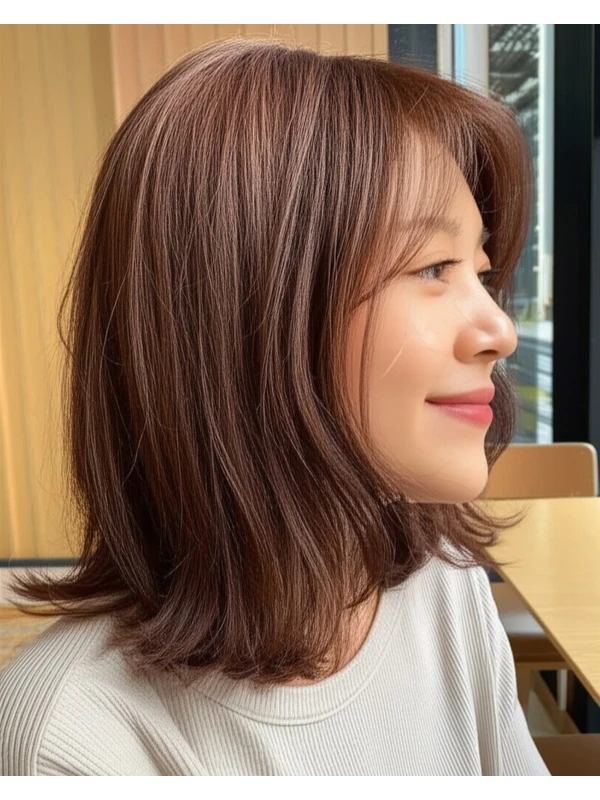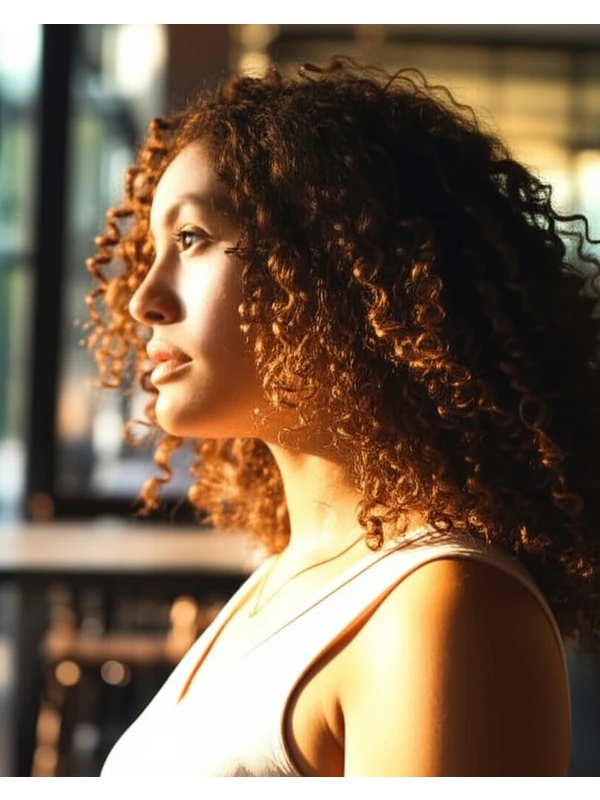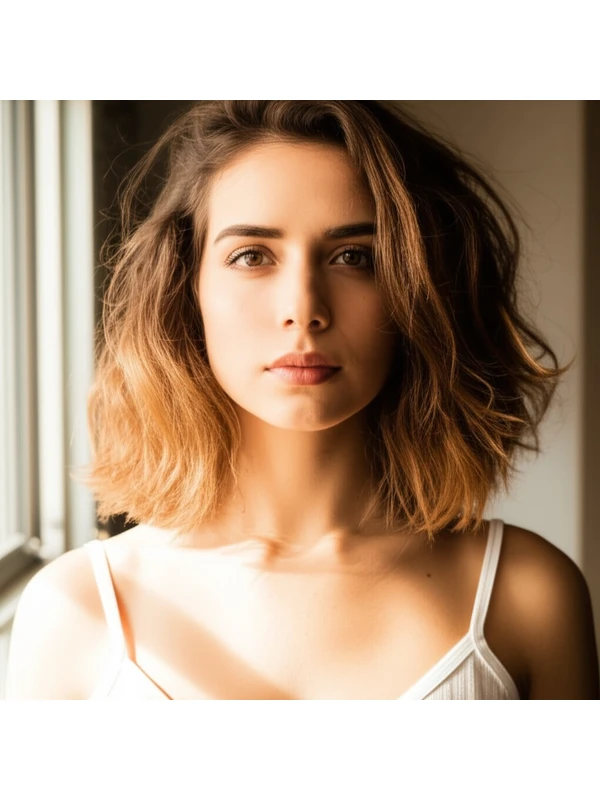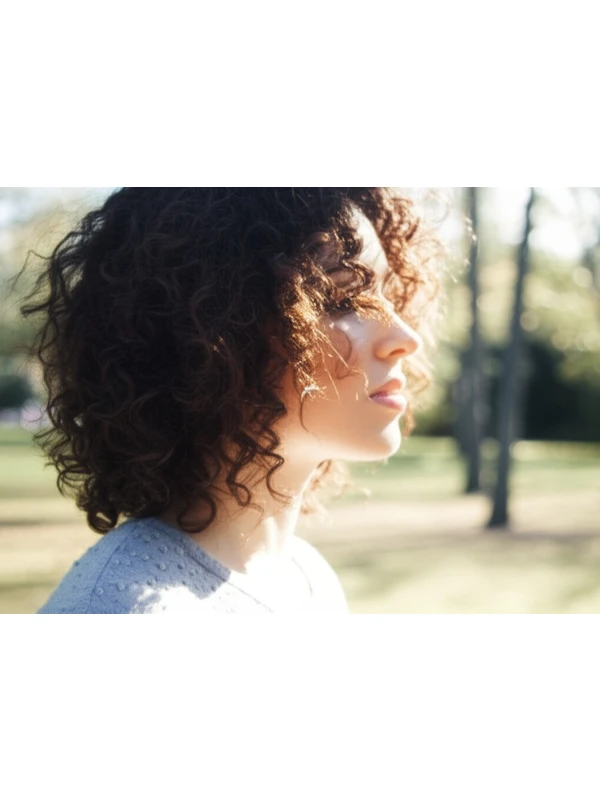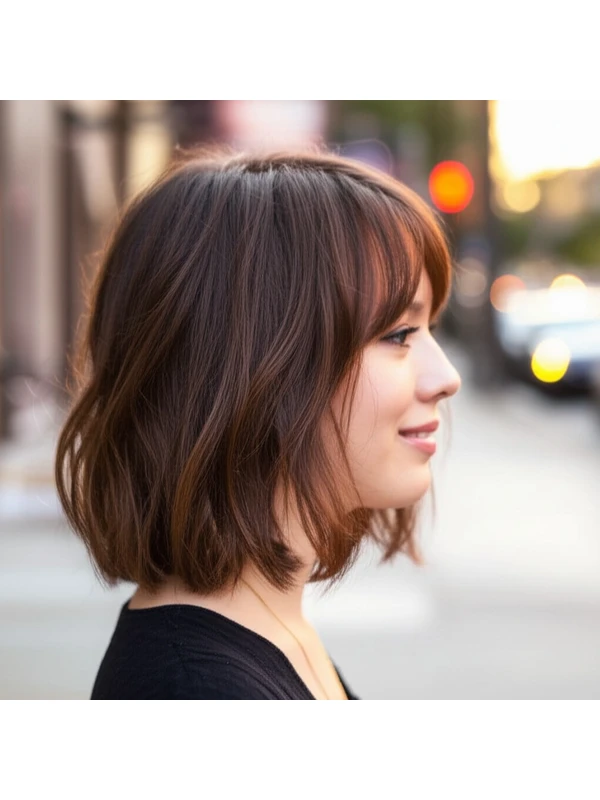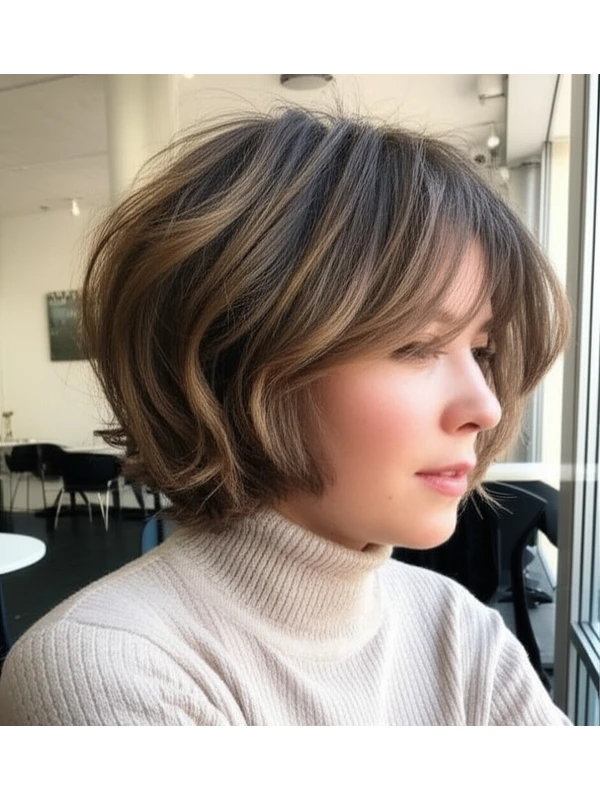#Shoulder Length Layers: A Style Guide for Every You
Shoulder-length layers are a timeless classic – universally flattering and surprisingly versatile. They offer movement, volume, and shape without the commitment of longer styles. This guide breaks down everything you need to know about this popular cut, from finding your perfect fit to keeping it looking fresh.
#1) Background & Definition: Understanding the Cut
Shoulder-length layers typically fall between chin length and just below the collarbone (roughly 8–12 inches). The defining characteristic is layers – sections of hair cut shorter than others, creating dimension and movement. The shortest layer often starts around the chin or jawline.
Key Features:
- Graduation: Layers are usually graduated, meaning they get progressively longer as you move up the head.
- Face-Framing: Often incorporates face-framing layers that soften features and draw attention to the eyes.
- Balance: Creates a balanced look by adding volume at the crown and softening lines around the face.
Alternative Names:
You might hear this style referred to as: "Collarbone Layers," "Shoulder Grazers with Layers," or simply, “Layered Bob.” The core concept remains consistent – layers falling around the shoulder area.
#2) Face Shape Fit: Finding Your Angle
The beauty of shoulder-length layers is their adaptability. However, certain tweaks can maximize flattery for each face shape.
- Oval: Lucky you! Almost any variation works beautifully. Consider slightly longer, softer layers to accentuate your balanced features. A side part adds asymmetry and interest.
- Fringe Options: Curtain bangs or a softly angled fringe are both excellent choices.
- Round: Layers add angles and length to visually slim the face. Avoid blunt cuts that can emphasize roundness. Focus on layers starting below the chin, creating vertical lines.
- Fringe Options: A long, wispy side-swept bang helps break up the roundness.
- Square: Soften strong jawlines with gentle layering and face-framing pieces that curve around the angles. Avoid harsh, geometric layers.
- Fringe Options: A soft, textured fringe or a long, blended curtain bang can soften features.
- Heart: Layers add balance to a wider forehead and narrower chin. Longer layers are generally more flattering than very short ones.
- Fringe Options: A side-swept fringe or wispy bangs help to balance the face shape.
- Diamond: Layers around the cheekbones can highlight your best feature. Avoid too much volume at the crown, which could widen the forehead.
- Fringe Options: A brow-grazing bang can soften a strong diamond shape.
- Oblong (Long): Layers add width and create the illusion of a shorter face length. Shorter layers around the jawline are particularly effective. Avoid overly long, straight hair which will elongate the face further.
- Fringe Options: A blunt or textured fringe can shorten the appearance of an oblong face.
#3) Body Proportions & Height Guidance: Tailoring to Your Silhouette
The placement and volume of layers should complement your overall body shape and height.
- Petite: Shorter, more voluminous layers create a fuller look. Avoid excessively long layers that can overwhelm a smaller frame.
- Average: Most layer lengths work well – experiment with different placements for personalized style.
- Tall: Longer layers help to soften the overall appearance and prevent looking too elongated.
- Narrow Shoulders: Layers around the shoulders add visual width, creating balance. Consider a slightly more voluminous cut at the crown.
- Broad Shoulders: Avoid adding excessive volume directly on top of your head, which can accentuate shoulder width. Focus layering towards the face and lower sections.
- Short Neck: Longer layers around the collarbone create the illusion of length. Avoid chin-length bobs that can make a short neck appear even shorter.
- Long Neck: Shorter, more layered styles add visual fullness to balance a longer neck.
#4) Works Best With Hair Types & Densities: A Texture Breakdown
Shoulder layers are adaptable but require adjustments based on your hair type and density.
- Straight: Layers create movement and volume that can be lacking in straight hair. Use texturizing products to enhance the effect.
- Wavy: Layers amplify natural waves, creating a more defined texture. Be mindful of frizz – use smoothing serums or oils.
- Curly/Coily: Layers add shape and definition but require careful cutting to avoid bulkiness or unevenness. Shrinkage is key! A stylist experienced with your hair type is essential. Expect significant shrinkage—what looks like a longer layer when cut will appear shorter once dry.
- Fine Hair: Layers create the illusion of volume, but too many short layers can make fine hair look even thinner. Focus on long, blended layers.
- Medium Density: Layers generally work well – experiment with different placements and styles.
- Thick Hair: Layers remove weight and bulk, creating a more manageable style. Consider point-cutting techniques for softer layering.
#5) Styling Variations: From Sleek to Textured
This cut is incredibly versatile!
- Sleek vs. Textured: Use a smoothing serum or oil for a sleek look; apply texturizing spray or mousse for added definition and movement.
- Middle vs. Side Part: A middle part creates symmetry, while a side part adds softness and asymmetry.
- Fringe Variations: Curtain bangs, blunt fringes, wispy bangs – the possibilities are endless!
- Occasion Styling:
- Casual: Air-dry with sea salt spray for effortless texture.
- Office: Straighten or wave gently and add a shine serum.
- Evening: Create soft waves using a curling iron or hot rollers, then finish with hairspray.
#6) Maintenance: Keeping Your Layers Looking Sharp
- Trim Cadence: Every 6-8 weeks to maintain shape and prevent split ends. Curly/coily hair may need more frequent trims (every 4-6 weeks).
- At-Home Routine: Regular deep conditioning treatments are essential for healthy, shiny hair.
- Heat vs. Air-Dry: Minimize heat styling whenever possible to protect your hair's health.
- Product Checklist:
- Shampoo & Conditioner (suited to your hair type)
- Leave-in conditioner or detangler (especially for dry or curly/coily hair)
- Heat Protectant (if using heat styling tools)
- Styling product: mousse, texturizing spray, serum, or cream.
- Hairspray (optional)
- Estimated Daily Styling Time: 10-30 minutes, depending on desired style and hair type.
#7) Grow-Out Roadmap: The Evolution of Your Style
- Months 1-3: The layers are most defined; regular trims maintain the shape.
- Months 3-6: Layers begin to blend together as they grow out, creating a softer look. You may need slightly shorter face framing pieces trimmed.
- Maintaining Shape: Ask your stylist for "dusting" – very light trimming to remove split ends and preserve length without changing the overall shape significantly.
#8) Color Pairings: Enhancing Your Layers
- Balayage/Highlights: Strategically placed highlights or balayage can add dimension and movement, emphasizing the layers.
- Cool Undertones (ashy blondes, cool browns): Create a sleek, modern look.
- Warm Undertones (golden blondes, caramel browns): Add warmth and radiance.
- Low-Commitment Options: Root smudging or glossing can refresh color without a full dye job.
#9) Season & Occasion Guide: Adapting to the Moment
- Spring/Summer: Embrace lighter textures – air dry with sea salt spray for effortless waves.
- Fall/Winter: Add warmth and richness with deeper tones or subtle highlights. A sleek, polished look is perfect for holiday gatherings.
- Work: A classic, professional style - straightened layers with a side part.
- Weddings/Parties: Soft curls or waves add glamour and sophistication.
#10) Cost & Time: Salon Investment
- Salon Time: Typically 45-90 minutes for the initial cut.
- Price Range: Expect to pay a moderate amount, depending on your location and stylist's experience. Maintenance trims will be less expensive (30–60 minutes).
#11) Pros & Cons: Weighing Your Options
Pros:
- Versatile and flattering for most face shapes
- Adds movement and volume
- Relatively easy to style
- Can be adapted to suit various hair types and densities.
Cons:
- Requires regular trims to maintain shape
- Layered styles can sometimes appear thin if the cut is too short or there are too many layers.
#12) Salon Consultation Script: Questions to Ask & Things to Say
Use these prompts when discussing your desired style with your stylist:
- “I’m interested in shoulder-length layers. Can you assess my face shape and recommend specific layer placements?”
- "I like the look of [show a picture]. How would that work for my hair type/density?"
- "What products do you recommend for styling this cut at home?"
- “How can we incorporate some face-framing pieces to soften my features?”
- “Can you show me how to style the layers when I leave today, and give me a product list?”
FAQs:
- Will shoulder length layers make my hair look thinner? Not necessarily! The key is strategic layering that adds volume where needed. Avoid too many short layers if your hair is fine.
- Can I do this cut myself at home? While possible, it’s best left to a professional for the most flattering and even results.
- How much will my hair shrink after being layered (if curly/coily)? Shrinkage varies greatly – discuss with your stylist to determine the appropriate length based on your curl pattern.
- Can I wear bangs with shoulder-length layers? Absolutely! Bangs are a great way to customize this style.
- How do I prevent frizz with layered hair? Use smoothing serums, oils, and avoid excessive heat styling.
- What if I don't like the layers after getting them cut? Communicate your concerns immediately to your stylist so they can make adjustments. It’s always better to address issues early on!
